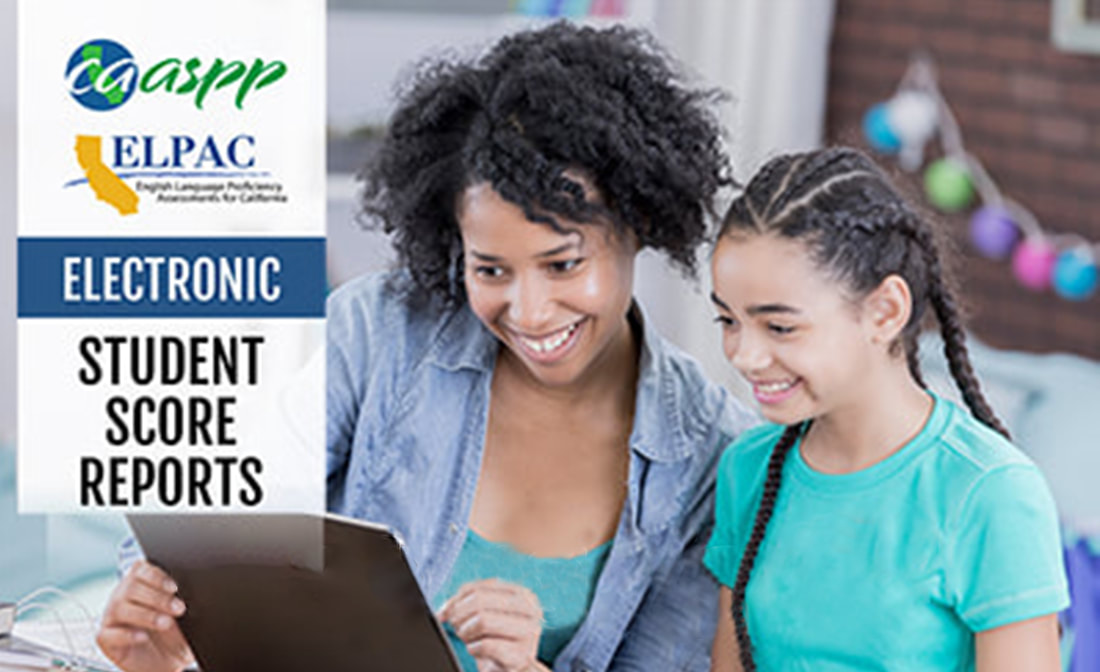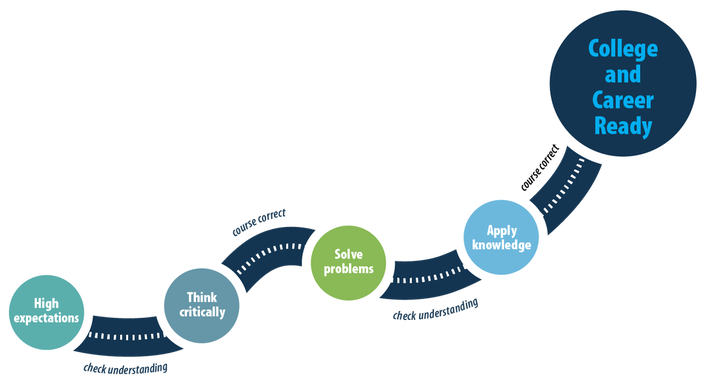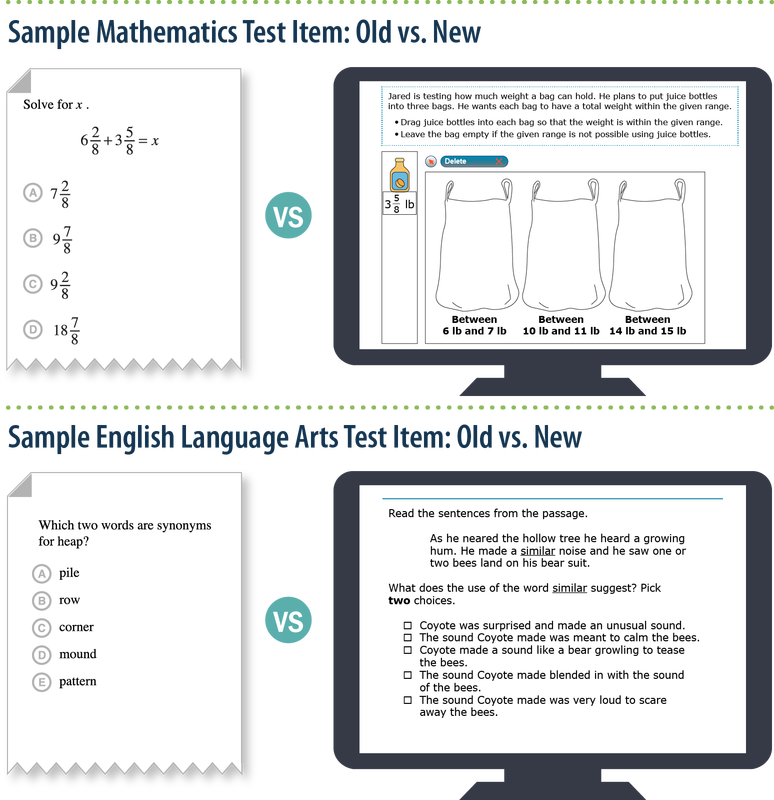ASSESSMENTS & ACCOUNTABILITY
CAASPP Electronic Student Score Reports
|
Electronic student score reports (SSRs) will be made available to parents/guardians through the Parent Portal for the following state assessments:
|
CALIFORNIA ACADEMIC ASSESSMENT OF STUDENT PERFORMANCE & PROGRESS (CAASPP)
The CAASPP System includes computer-based assessments that are aligned with the Common Core State Standards (CCSS).
- Smarter Balanced System of Assessments (SBAC)
Aligned with the CCSS for English-language arts/Literacy and mathematics, for students in grades 3-8 and grade 11.
- California Science Test (CAST)
The California Science Test (CAST) is aligned with the Next Generation Science Standards for California Public Schools, Kindergarten Through Grade Twelve (CA NGSS).
- California Alternate Assessments (CAAs)
The CAAs for ELA, mathematics, and Science are aligned with alternate achievement standards—called the Core Content Connectors (CCCs)—and linked to the California Content Standards. Only eligible students may participate. - California Spanish Assessment
The CSA is a new assessment under development. This assessment measures the students literacy in Spanish language arts. It can be used in part for the State Seal of Biliteracy.
CAASPP Parent Letter
STARTING SMARTER
|
“Starting Smarter,” family websites for the California Assessment of Student Performance and Progress (CAASPP) and the English Language Proficiency Assessments for California (ELPAC).
Using these websites, families can become involved in their child’s progress and:
Click here to view the flyer in English. Click here to view the flyer in Spanish. |
EARLY ASSESSMENT PROGRAM (EAP)
EAP is a program that assesses students for college-readiness in grade 11 of high school.
Each spring, all grade eleven students in California take the Smarter Balanced Summative Assessments for English language arts/literacy (ELA) and mathematics. These assessments, which are administered as part of the CAASPP System, also serve as an indicator of readiness for college-level coursework in English and mathematics and are used by the California State University (CSU) and participating California Community Colleges (CCCs) to determine EAP status.
Read more about EAP on CDE web page
OTHER EAP RESOURCES
CSU Success Web site | GreatKids State Test Guide for Parents | Reporting Achievement Level Descriptors | Claim Achievement Level Descriptors
Each spring, all grade eleven students in California take the Smarter Balanced Summative Assessments for English language arts/literacy (ELA) and mathematics. These assessments, which are administered as part of the CAASPP System, also serve as an indicator of readiness for college-level coursework in English and mathematics and are used by the California State University (CSU) and participating California Community Colleges (CCCs) to determine EAP status.
Read more about EAP on CDE web page
OTHER EAP RESOURCES
CSU Success Web site | GreatKids State Test Guide for Parents | Reporting Achievement Level Descriptors | Claim Achievement Level Descriptors
CAASPP STUDENT SCORE REPORT
A report that shows how students in grades 3-11 scored on the CAASPP assessments for English language arts/literacy and mathematics.
NEW CAASPP Assessment Student Score Reports will be available online through Parent Portal. Here are two Guides to assist you with understanding the score report. Click here to view the sample report.
|
Understanding the Student Score Report
|
|
STUDENT ACHIEVEMENT
Student achievement results are presented annually to the Board of Education in the fall of each year. These reports focus on the Strategic Plan goals as well as other measures.
MUSD CAASPP Progress and Performance 2019-2021
MUSD CAASPP Progress and Performance 2019-2021
CONNECTING LEARNING TO LIFE
A New Approach
Milpitas Unified School District students are on the path! The State of California worked with other states, educators, business leaders, and colleges to define the skills needed for students to graduate college and be career-ready. Along with other states, we have shifted our focus to teaching these higher thinking skills, and regularly check progress to ensure our students are moving toward their learning goals. Now, with the new assessments that measure growth over time, we will have the information we need to adjust teaching and improve learning, increasing each student’s opportunity to succeed.
It's a New World.....Take a peek inside your child's backpack for a window into changes in the classroom. You will find that:
Expectations are higher and deeper – students are asked to explain reasoning, support arguments with evidence from texts, and persevere in solving real world problems.
Students are evaluated to ensure they are making progress – students and teachers review work to check understanding and revise teaching and learning where weaknesses are identified.
Rapid response when challenges are identified – with good information teachers can course correct before students fall off track.
Milpitas Unified School District students are on the path! The State of California worked with other states, educators, business leaders, and colleges to define the skills needed for students to graduate college and be career-ready. Along with other states, we have shifted our focus to teaching these higher thinking skills, and regularly check progress to ensure our students are moving toward their learning goals. Now, with the new assessments that measure growth over time, we will have the information we need to adjust teaching and improve learning, increasing each student’s opportunity to succeed.
It's a New World.....Take a peek inside your child's backpack for a window into changes in the classroom. You will find that:
Expectations are higher and deeper – students are asked to explain reasoning, support arguments with evidence from texts, and persevere in solving real world problems.
Students are evaluated to ensure they are making progress – students and teachers review work to check understanding and revise teaching and learning where weaknesses are identified.
Rapid response when challenges are identified – with good information teachers can course correct before students fall off track.
Preparing our students for the future
STAR testing has been replaced by the California Assessment of Student Performance and Progress (CAASPP).
The tests are interactive, challenging and uniquely accessible with questions that require higher level thinking skills, look like real life problems, and are similar to expected classroom work. Most important, it provides information that informs action in the classroom.
The tests are interactive, challenging and uniquely accessible with questions that require higher level thinking skills, look like real life problems, and are similar to expected classroom work. Most important, it provides information that informs action in the classroom.
OTHER RESOURCES
An Academic Checkup Video
California State PTA
Math Resources for Parents
What's Cooking with Common Core Video
Deeper Learning
Parent Information on California Assessment of Student Performance and Progress Program
SBAC Test Construction & Claims
California State PTA
Math Resources for Parents
What's Cooking with Common Core Video
Deeper Learning
Parent Information on California Assessment of Student Performance and Progress Program
SBAC Test Construction & Claims









